#sainte-croix de poitiers
Text
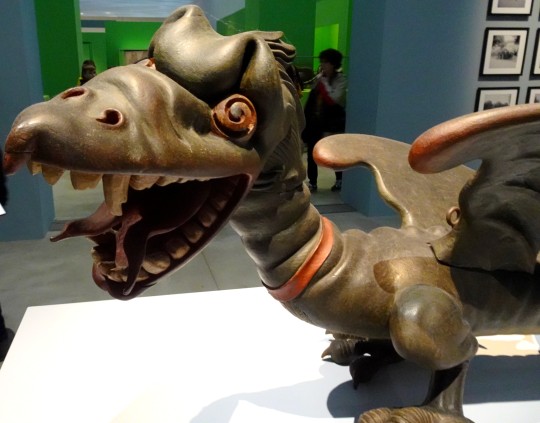
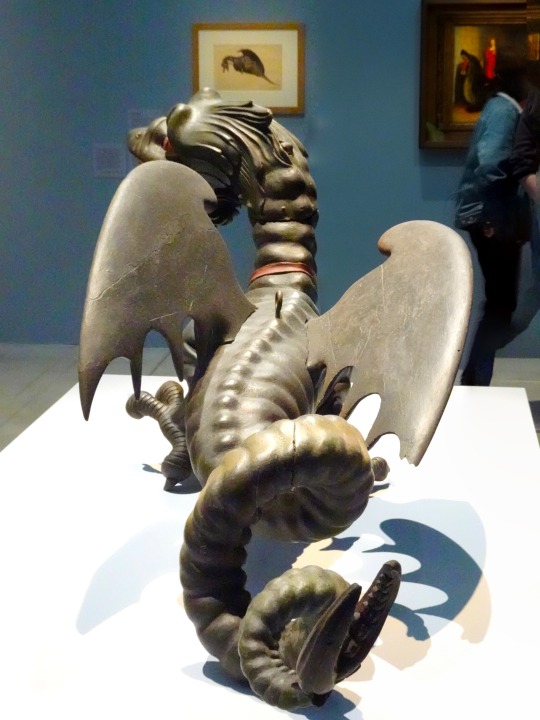
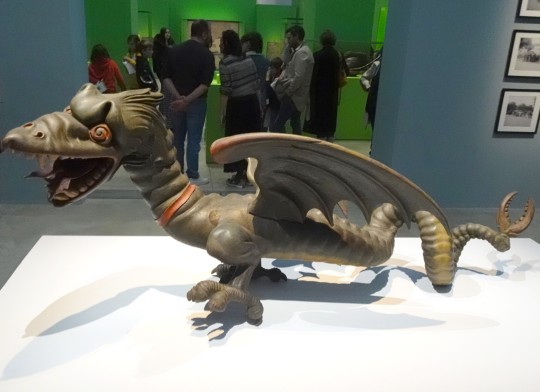
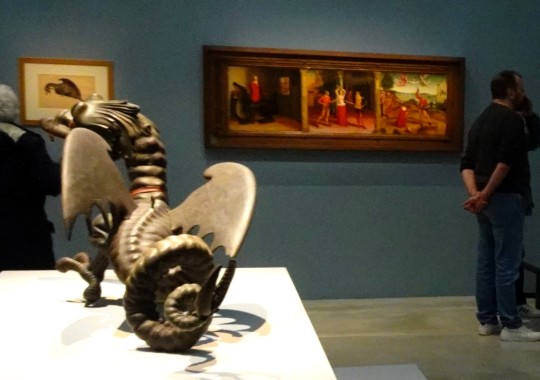

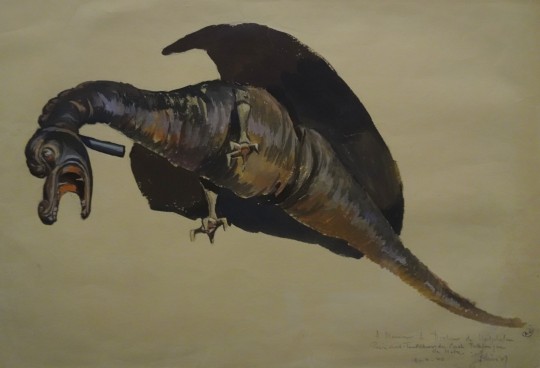
Il y a une petite quinzaine, je suis allé avec Julien et Katie, au Louvre-Lens pour une expo temporaire : "Animaux Fantastiques". Une très belle expo !
Ici des dragons.
Jean Gargot - "La Grand Goule" - Abbaye Ste-Croix de Poitiers, 1677...sauf le dernier :
Jean Thiriot - "L'effigie du Graoully de la Cathédrale de Metz"
#expo#louvre-lens#animaux fantastiques#monstre#créature#dragon#goule#grand goule#sainte-croix de poitiers#abbaye sainte-croix#jean thiriot#jean gargot#graoully#metz
2 notes
·
View notes
Text

1 note
·
View note
Photo


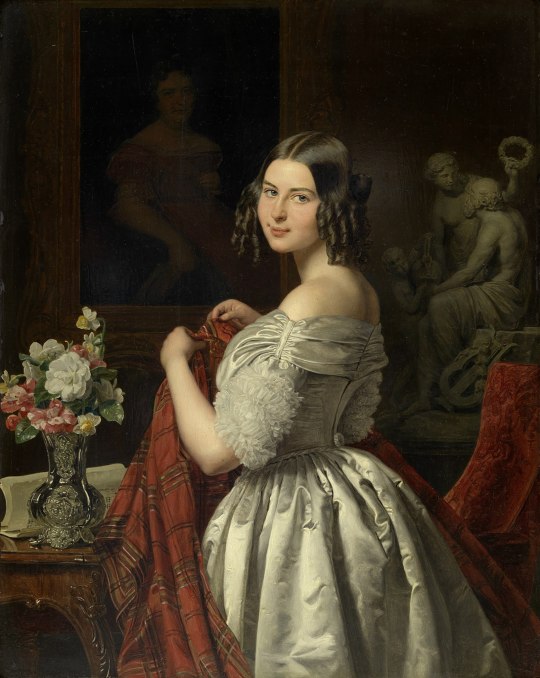
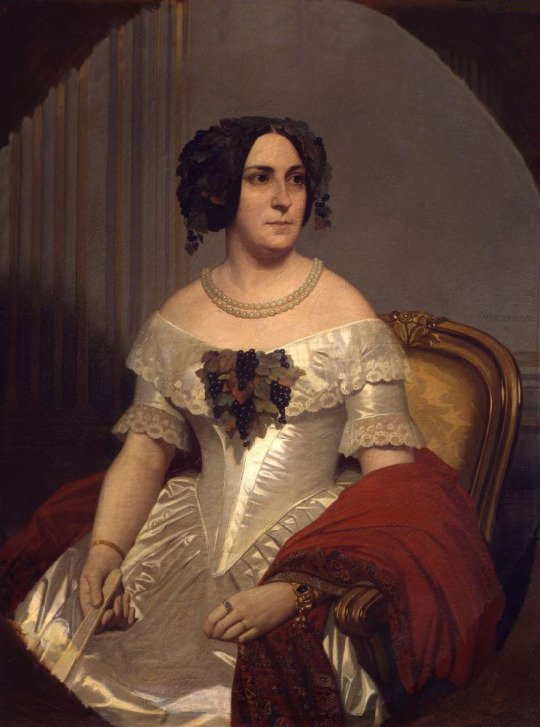



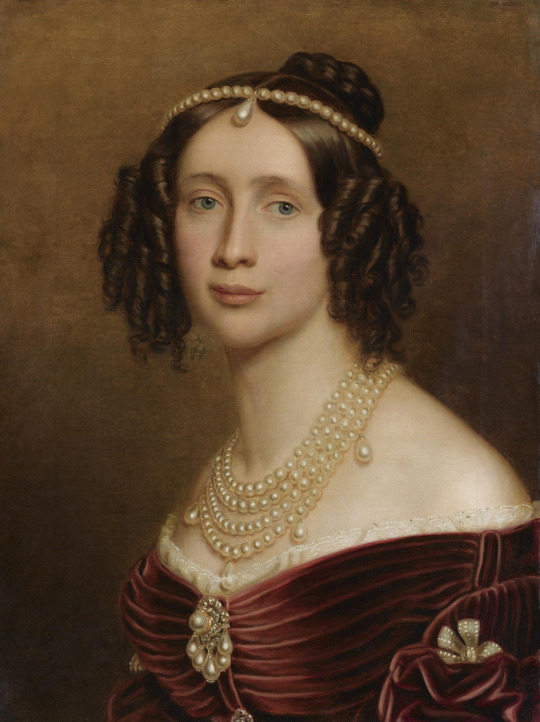
Pre-crinoline Victorian dresses (from top to bottom) -
1837 Maria Louise Alexandrine von Preußen geb. Prinzessin von Sachsen-Weimar-Eisenach by Carl Joseph Begas (Klassik Stiftung Weimar, specific location ?). From Wikimedia 1311X1542.
ca. 1840 Lady Flora Hastings possibly by Edward Finden after E. Hawkins; portrait from the book Hastings of Hastings. From Wikimedia, attributions from British Museum Web site 2275X2263.
1840 Junge Dame bei der Toilette by Ferdinand Georg Waldmüller (Wien Museum or Museen der Stadt Wien, specific location ? - Wien, Austria). From Wikimedia 1632X2048.
1842 Marquise Louis-Frédéric Foucher de Circé, née Marie-Marguerite Burthe by Amaury Duval (Musée Sainte-Croix - Poitiers, Vienne, Nouvelle-Aquitaine, France). From Wikimedia; fixed spots, creases, & flaws w Pshop 743X1000.
Marie Karoline Austria Teschen by Robert Theer (auctioned by Christie's) From the lost gallery's photostream on flickr; fixed spots w Pshop 1884X2312.
Unknown woman by Sergey Zaryanko (Tyumen Regional Museum of Fine Arts - Tyumen, Tyumen Oblast, Russia). From theebonswan.blogspot.com/2018/12/portrait-of-unknown-woman-1840s-sergey.html?view=magazine 781X999.
Probably Lady Adelaide Emelina Caroline Vane by Sir Francis Grant (auctioned by Christie's). From their Web site 1196X1574.
1842 Maria Anna of Bavaria, Queen of Saxony by Joseph Karl Stieler (location ?) From the lost gallery; fixed spots & flaws w Pshop 1459X1951.
#1830s fashion#1840s fashion#early Victorian fashion#Romantic era fashion#Biedermeier fashion#Maria Louise Alexandrine von Preußen#Carl Joseph Begas#straight hair#side curl coiffure#modesty piece#pleated bertha#quarter-length sleeves#darts#full skirt#Flora Hastings#Edward Finden#E. Hawkins#bateau neckline#imbecile sleeves#natural waistline#waist band#Ferdinand Georg Waldmüller#ruffled sleeves#Marie-Marguerite Burthe#Amaury Duval#lace trim#V waistline#Marie Karoline Austria Teschen#Robert Theer#wavy hair
29 notes
·
View notes
Text
La dispute - ( RC )
La dispute – ( RC )
Chapiteau dit de “La Dispute” (XIe) – Musée Sainte-Croix, Poitiers (86)
Il était moins une :un génie a figé dans la pierrede la manière la plus opportunenos héros à l’attitude guerrière :chacun se tient par la barbichette:aucun ne veut céder du terrainon brandit une hachette,enfin, tout ce qui tombe sous la main :
de petits personnages placés en arrièreapparaissent dans le décortentent de…
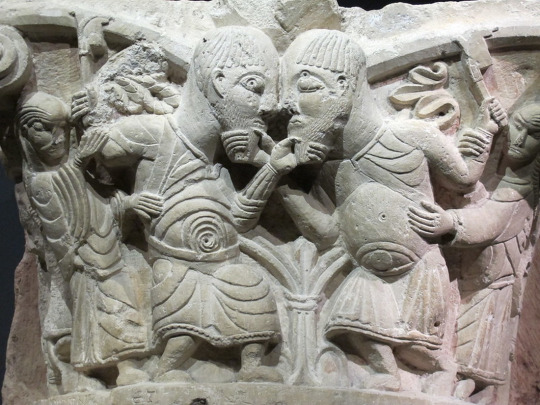
View On WordPress
#adversaires#attitude guerrière#église#chapiteau#chiens d&039;arrêt#colonne#discussion#fatal#funeste#gestes#hachette#lutteurs#personnages#Poitiers
2 notes
·
View notes
Text
Marie de Cotteblanche
Marie de Cotteblanche (ca.1520- ca.1580)
Translator and linguist

Born into a family of parlementaires (members of Paris's Parlement), Marie de Cotteblanche was the daughter of Guy de Cotteblanche, a lawyer at the Paris Parlement, and Catherine Hesselin, whom he married in 1517. Her older brother Elie accumulated many honors, becoming a gentleman of the Chambre du Roi in 1571 and knight of the Order of Saint Michel in 1578. Marie had a sister Marguerite, as we learn from the cosmographer François de Belleforest's dedication to them of his pastoral poem, Chasse d'Amour (Love's Hunt, 1560). The bibliographer La Croix du Maine notes that she was a "Damoiselle Parisienne, très docte en Philosophie et Mathématiques" (Damoiselle Parisienne, very learned in philosophy and mathematics).
Marie de Cotteblanche was also adept at languages. Her only extant work, Trois dialogues de M. Pierre Messie, touchant la nature du Soleil, de la Terre, et de toutes les choses qui se font et apparoissent en l'air (Three Dialogues by M. Pierre Messie, concerning the nature of the sun, the earth, and all things that happen and appear in the air), a French translation of three Spanish dialogues by the cosmographer Pedro Mexia (or Mejia, Pierre Messie in French, 1497-1551), was published in 1566 and reissued some twenty-nine times between 1566 and 1643, either independently, in Claude Grujet's translation of Messie's Diverses Leçons, or in an anonymous translation of the complete dialogues of Pierre Messie.
Cotteblanche bases her translation on both the original Spanish version (either the 1547 or 1548 editions) and an Italian rendition by Alfonso d'Ulloa published in Venice in 1557. In her numerous marginal annotations, Cotteblanche compares the Spanish and Italian versions, opting sometimes for the one or the other or sometimes coming up with her own formulations. In her dedicatory letter to her friend and patron, Marguerite de Saluces, maréchale de Termes, she thanks the latter for having taught her Italian. She states her knowledge of only Italian, a privileged language at court and among a select group of translators who were state secretaries, writers, and lawyers. Marie de Cotteblanche combines her knowledge of languages with her interest in the sciences. Of the six dialogues by Messie, she retains only the three that concern geophysical and cosmological topics (the sun, the earth, and the meteors). Her choice of a scientific subject matter was not an unusual one for a woman of the elite class. Many learned women of the nobility and upper gentry were well read in the sciences. Catherine de Médicis, for instance, was interested in astronomy and the natural sciences, Marguerite de Valois and Diane de Poitiers in medical treatises, and Catherine de Clermont, maréchale de Retz, in philosophy and mathematics.
Cotteblanche's choice of the dialogue form, a favorite humanist genre, appealed to a wide readership eager to expand its learning. In her preface, she states her great love for books ("seuls m'ont faict fidèle compaignie" [they alone have been my faithful companions]), study and learning. She was also commited to writing. She viewed her translation as a stylistic exercise, a first attempt to produce a work that would eventually lead to another publication reflecting her own creativity. No other work by her has been published.
Anne R. Larsen in Encyclopedia of Women in the Renaissance
5 notes
·
View notes
Link
#Abtei#Agnes#Basina#Chlothar#Ehe#Frauen#Germanen#Gregor#Kloster#Liebe#Macht#Nonnen#Poitiers#Radegundis
0 notes
Text
Poitiers

Poitiers est une ville de l'ouest de la France riche de ses ruelles médiévales, de ses nombreux parcs et églises ainsi que de son passé. On se perd agréablement à la recherche des façades anciennes, des hôtels particuliers et des chapelles romanes. Sa localisation pratique permet d'en faire une étape centrale pour un grand week-end dans le département.
Comment venir ?
Poitiers se situe :
en train : 30min de Tours, 1h20 de Paris, 1h45 de La Rochelle, 1h50 de Bordeaux, 2h de Limoges
en voiture : 1h de Tours, 1h30 de La Rochelle, 1h50 de Limoges, 2h d'Angers, 2h d'Orléans, 2h de Le Mans, 2h20 de Bordeaux
en bus : 1h50 de Tours, 2h25 de La Rochelle, 2h50 de Bordeaux

Quand et combien de temps ?
Poitiers est une ville à taille humaine qui se visite facilement en une journée. Cela vous laissera le temps de contempler les multiples églises du centre et de vous promener dans les parcs verdoyants. Pour rester sur place plus longtemps il faudra prévoir des expéditions dans les villes ou villages des environs.

Quoi voir à Poitiers ?
Des bâtiments historiques : place du Maréchal Leclerc, Hôtel de la Bidolière, Hôtel Fumé, Hôtel de ville, Hôtel Claveurier, Palais des Comtes de Poitou-Ducs d'Aquitaine, Amphithéâtre, Hôtel Jean Beaucé, Prévôt, Échevinage
Du patrimoine religieux : Eglise Notre-Dame-la-Grande, Cathédrale Saint-Pierre, Église Saint-Hilaire le Grand, Église Saint-Jean de Montierneuf, Église Saint-Paul, Église Saint-Porchaire, Église Sainte-Thérèse et Sainte Jeanne d'arc, Église Sainte-Radegonde, baptistère Saint-Jean, Eglise st germain, Eglise st hilaire le grand, Chapelle st louis
Des musées : Musée st croix, musée d'Histoire naturelle, musée du Palais des Comtes
Des parcs et jardins : parc de Blossac, jardin des plantes, parc floral de la Roseraie

Quoi faire dans les environs ?
Des activités : Futuroscope, Grotte de Norée, Lac de St Cyr
Des villes et villages : Chauvigny, Châtellerault, Saint-Savin-sur-Gartempe, La Roche-Posay, Angles-sur-l'Anglin, Parthenay, Montmorillon
Des monuments : château à Moncontour, Église Saint-Hilaire de Melle, château de Thouars, Abbaye de Nouaillé-Mauperthuis, Abbaye de Saint Savin sur Gartempe
Des jardins et parcs : Laverré, Touffou, Jardin du château de La Mothe, La Guyonnière, Arboretum du chemin de la découverte, Vallée des singes
crédits photos @ lilstjarna
1 note
·
View note
Text

Essencialmente autora de retratos, Romaine Brooks usava uma paleta de cores escuras dominada pelos cinzentos. A sua obra aproxima-se dos movimentos simbolistas e esteticistas do século XIX e, em particular, da obra de Whistler. Quatro desses retratos são visíveis nas coleções do Museu Sainte-Croix em Poitiers.
"Romaine Brooks, nascida Beatrice Romaine Goddard, em Roma, em 1º de maio de 1874 e falecida em Nice, em 7 de dezembro de 1970, foi uma pintora americana.
Pouco depois de seu nascimento, seus pais, americanos ricos, voltaram para os Estados Unidos da América. Sua mãe a abandona e prefere seu irmão, que sofre de transtornos mentais. Ela maltrata Romaine, acusa-a de estar possuída pelo demônio e acaba confiando-a a uma família pobre de Nova York quando ela tinha sete anos.
Em 1893, aos 19 anos, foi para Paris onde cantou em cabarés, para Roma para estudar pintura e para Capri. Em 1901, ela voltou para a mãe para cuidar dela antes que ela morresse de diabetes e, com o irmão também morto, herdou a fortuna do avô materno.
Em 1903, Romaine Brooks se casou com seu amigo John Ellington Brooks, um pianista bissexual. Logo depois, eles fazem um acordo de que não vão se divorciar, para respeitar as convenções sociais, mas nunca vão morar juntos. Em troca, Romaine Brooks pagará uma pensão mensal ao marido.
Por volta de 1904, insatisfeita com seu trabalho, passou a trabalhar com cinzas, que continuaram sendo os tons dominantes de suas obras posteriores.
Livre de seus laços matrimoniais, mantém relações amorosas com vários artistas, com a sobrinha de Oscar Wilde, Dolly Wilde, com a dançarina Ida Rubinstein e com o escritor e político Gabriele D'Annunzio. A relação mais importante de sua vida será aquela que viverá, durante cinquenta anos, com a escritora Natalie Clifford Barney, que conheceu em 1915. Ela também se relaciona com a baronesa Franchetti, a pianista Renata Borgatti e a princesa de Polignac.
A carreira de Romaine Brooks, no auge em 1925 (seus quadros foram apresentados em Londres, Paris e Nova York), declina a partir dos anos 1930. Abandonando a pintura, produz desenhos inspirados em sua infância infeliz.
Ela morreu em 7 de dezembro de 1970, em Nice. Um ano após sua morte, a National Collection of Fine Arts (atual Museu Nacional de Arte Americana do Smithsonian Institute) dedica uma retrospectiva a ele. O interesse do público pela obra de Romaine Brooks voltou, várias outras exposições foram organizadas durante a década de 1980".
0 notes
Text
SCHOOL / TRAINING
February 2024 - AfterEffect CC training, compositing techniques and their applications in animated film, Atlantiz Park, Angoulême
2020-2022 - DNSEP with distinction for political commitment, EESI (European School of Visual Art), Poitiers
2017-2020 - DNA, with specialization in animated images, EESI Poitiers
2016-2017 - Preparatory class for entrance examinations to art schools, GrandAngoulême Art School
PROFESSIONAL EXPERIENCES
November 2022 - June 2023 - Civic service assignment (mediation and communication) with the Musiques Métisses association, Angoulême
February - June 2022 - Cultural mediation for young audiences and schools, Sainte Croix Musuem, Poitiers
March - June 2022 - Internship with Chloé Mazlo, creation of an animated film as part of a workshop with prisoners at the Maison Centrale in Saint-Martin-de-Ré
January 2019 - Internship at the Confort Moderne, installation of Claire Fontaine’s exhibition Les printemps seront silencieux, Poitiers
RESIDENCIES
July - November 2023 - Research and experimentation residency at Can Serrat, El Bruc, Espagne
◌ View of the work developed, Don’t worry, they are just grieving, by Edo Garcia : https://www.youtube.com/watch?v=O-bHTkLj3fY
EXHIBITIONS
March 2024 - Corps et communautés en mouvement , performance made with Manon Thomas, as part of the Essenti’[elles] festival, Centre d’Art Madeleine-Lambert, Vénissieux
March 2023 - Screening of Five seconds, on the web radio ZaïZaï Radio, followed by a talk about chosen mixity, for the 8th of March (international day for women’s rights)
Septembre 2022 - Screening of Five seconds at the eco-feminist festival «Réinventer son monde», Orléans
July 2022 - Screening of Loques à terre at the FEMA La Rochelle (50th edition)
February 2022 - Collective exhibition Chemins de Faire, diffusion of Five seconds in sound form, Confort Moderne, Poitiers
Février 2022 - Collective and feminist exhibiton Mêlées, diffusion of Five seconds in sound form, Chantier Public, Poitiers
FILMOGRAPHIE
Five seconds, documentary, live-action and animation, 9 minutes, 2022
Loques à terre, fiction, animation, created during a workshop with Cholé Mazlo and the inmates of the Maison Centrale in Saint-Martin-de-Ré, 6 minutes 32, 2022
goutte à goutte, documentary, traditional animation, 6 minutes 07, 2020
Programme délicat, fiction, live-action, 3 minutes 57, 2019
0 notes
Text

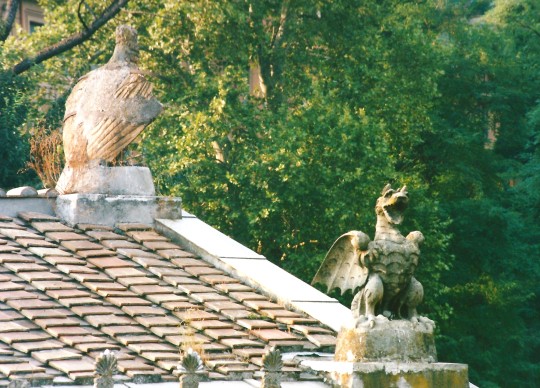


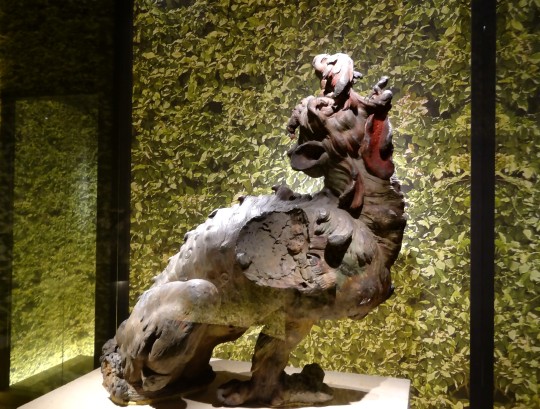

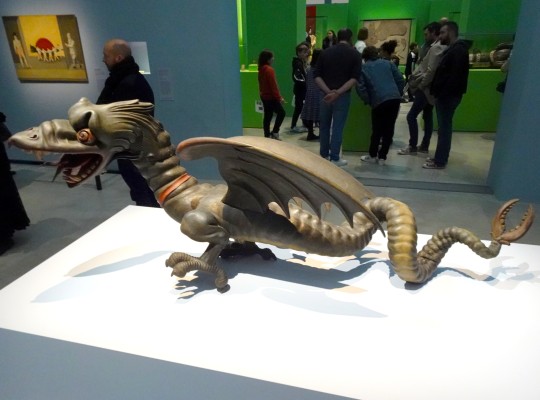

L'année du Dragon arrive !
Une longue série de dragons arrive... Ici, des dragons baroques, classiques et apparentés...
Versailles, le Bassin du Dragon
Rome, Piazza del Popolo
Marseille, MuCEM - limonaire - Paris, 1909
Tarascon - la Tarasque
Arras, musée des Beaux-Arts- expo Versailles - le Dragon du Labyrinthe
Louvre-Lens, expo "Les Tables du Pouvoir" - aiguière - Brésil, 17ème s.
idem, expo "Animaux fantastiques" - Jean Gargot - "La Grand Goule" - Abbaye Sainte-Croix de Poitiers, 1677
idem - Hendrick Goltzius, gravure d'après Cornelis Cornelisz - "Le Dragon dévorant les compagnons de Cadmos" - Haarlem, 1588
#dragon#année du dragon#monstre#versailles#classicisme#baroque#bassin du dragon#jardins de versailles#rome#italie#piazza del popolo#marseille#MuCEM#limonaire#tarascon#tarasque#arras#musée des beaux-arts#louvre-lens#les tables du pouvoir#aiguière#brésil#animaux fantastiques#jean gargot#grand goule#goule#sainte-croix de poitiers#poitiers#hendrick goltzius#cornelis cornelisz
13 notes
·
View notes
Text
Parlay In Reverse Chapter 24, Data & Lore
Hey guys I hope everyone has been well! I would start by saying how excited I am that the fic is at this point where I can finally share this with all of you. Alot of this data was written out years ago so Im super stoked that I can share it now as it starts to become relevant to plot. As we start looking to Fleur's side of the pond more as the story progresses. There is a war looming.
Map of Wizarding France: Regions & High Lords

Lordships:
Delacour
Ile-de France
Centre-Val De Loire
Poitou-Charentes
Burgundy
Limousin
Auvergne (Delacour Palace) - Capital
Evreux
Aquitaine
Midi-Pyrenees (Evreux Palace)
Rhone-Alpes
Languedoc-Roussillon
Provence-Alpes-Cote d'Azur
Corsica
Dampierre
Alsace
Picardy
Normandy
Maiziere
Brittany
Pays de la Loire
Full Breakdown of Houses:
Delacour
Ile-de France (Muggle Capital - Not safe for wizarding kind)
Centre-Val De Loire
Largest Cities:
Tours (House Lavigne)
Orleans (House Janvier)
Bourges (House Bain)
Chateauroux (House Guillaume)
Chartres (House Cadieux)
Joue-les-Tours (House Baudelaire)
Dreux (House Kama)
Vierzon (House Flamel)
Olivet(House Basset*EXTANT) - New Lordship Delacour (Aurelian)
Poitou-Charentes
Major Communities:
Angouleme (House Lefevre)
Bressuire (House Moreau)
Chatellerault (House Picard)
Cognac (House Riviere)
La Rochelle (House Sartre)
Niort (House Tasse)
Melle (House Trottier)
Poitiers (House Vachon)
Rochefort (House Vaillancourt)
Royan (House Varon)
Saintes (House Yotte)
Burgundy
Major Communities:
Autun (House Zabelle)
Auxerre (House Voland)
Avallon (House Houde )
Beaune (House Joubert)
Chalon-sur Saone (House Colas)
Dijon (House Valiquette)
Le Creusot (House Carignan)
Macon (House Baptiste)
Montceau-les-Mines (House Tauzin)
Nevers (House Sarrazin)
Paray-le-Monial (House Laffitte)
Sens (House Carmouche)
Limousin
Brive-la-Gaillarde (House Laframboise)
Gueret (House Sirois)
Limoges (House Helie)
Panazol (House Mondesir)
Saint-Junien (House Harnois)
Tulle (House Dubuisson)
Ussel (House Tetu)
Auvergne (Delacour Palace) - Capital
Aurillac (House Llommedieu)
Chamalieres (House Manigault)
Clermont-Ferrand (House Le Beau)
Cournon-d’Auvergne (House Molyneux)
Issoire (House Picou)
Le Puy-en-Velay (House Regimbal)
Montlucon (House Quebedeaux)
Moulins, Allier (House Courtois)
Riom (House Meunier)
Vichy (House Loup)
Thiers, Puy-de-Dome (House Raba)
Evreux
Aquitaine
Bordeaux (House Quay)
Pau (House Robideaux)
Merignac (House Davolt)
Pessac (House Chausse)
Bayonne (House Garcon)
Perigueux (House Lesage)
Talence (House Vivier)
Anglet (House Frappier)
Agen (House Escoffier)
Mont-de-Marsan (House Lequire)
Dax (House Lehouillier)
Midi-Pyrenees (Evreux Palace)
Albi (House Gautier)
Auch (House Bastarache)
Blagnac (House Dozois)
Cahors (House Heroux)
Castres (House Fluet)
Colomiers (House Audibert)
Lourdes (House Cadoret)
Millau (House Robichaud)
Montauban (House Lavis)
Muret (House Sansouci)
Rodez (House Fortin)
Tarbes (House Guillory)
Toulouse (House Sacre)
Tournefeuille (House Goupil)
Rhone-Alpes
Annecy (House Quin)
Bourg-en-Bresse (House Real)
Bron (House Roux)
Chambery (House Amyot)
Grenoble(House Regis)
Lyon (House Laflamme)
Montelimar (House Reinagel)
Roanne (House St. Croix)
Vienne (House Houx)
Saint-Chamond (House Filiatrault)
Saint-Etienne (House Latendresse)
Saint-Martin-d’Heres (Remy)
Thonon-les-Bains (House Philibert)
Valence (House Liou)
Vaulx-en-Velin (House Salois)
Villeurbanne (House Laforge)
Venissieux (House Drolet)
Villefranche-sur-Saone (House Palin)
Languedoc-Roussillon
Ales (House Contois)
Beziers (House Riveron)
Carcassonne (House Guion)
La Palme (House Dandurand)
Montpellier (House Clos)
Narbonne (House Vaux)
Nimes (House Bergevin)
Perpignan (House Maneval)
Sete (House Dauphine)
Provence-Alpes-Cote d’Azur
Aix-en-Provence (House Mire)
Antibes (House Belyeu)
Aries (House Saindon)
Aubagne (House Hache)
Avignon (House Dallaire)
Cannes (House Williquette)
Draguignan (House Lusignan)
Frejus (House Groux)
Grasse (House Alarie)
Hyeres (House Voisine)
La Seyne-sur-Mer (House Pigue)
Le Cannet (House Wion)
Mandelieu-la-Napoule (House Santerre)
Manosque (House Monceaux)
Marseille (House Hait)
Martigues (House Gallipeau)
Mougins (House Daquin)
Nice (House Gignac)
Salon-de-Provence (House Zay)
Toulon (House Dargis)
Villeneuve-Loubet (House Sauve)
Corsica (4 lords)
Bastia (House Delfosse)
Corte (House Prefontaine)
Ajaccio (House Anouilh)
Sartene (House Paret)
Dampierre
Alsace
Bischheim (House Ponthieux)
Colmar (House Yount)
Guebwiller (House Carbonneau)
Haguenau (House Beaupre)
ILLKirch-Graffenstaden (House Michon)
Illzach (House Vertefeuille)
Lingolsheim (House Virkler)
Mulhouse (House Compere)
Saint-Louis (House Bercegeay)
Saverne (House Mayeaux)
Schiltigheim (House Betit)
Selestat (House Lacroix)
Strasbourg (House Simonet
Wittenheim (House Martsolf)
Lorraine
Epinal (House Laplante)
Forbach (House Ducote)
Luneville (House Abreo)
Metz (House Laut)
Montigny-les-Metz (House Dauzat)
Nancy (House Mahon)
Saint-Die-des-Vosges (HouseThierry)
Sarreguemines (House Ury)
Vandoeuvre-les-Lancy (House Thomassie
Thionville (House Nys)
Champagne-Ardenne (Dampierre Palace)
Chalons-en-Champagne
Charleville-Mezieres (House Trivette)
Chaumont (House Maupin)
Epernay (House Daoust)
Reims (House Maheux)
Saint-Dizier (House Oriol)
Sedan (House Bedel)
Troyes (House Gagnier)
Franche-Comte
Besancon (House Savoie)
Montbeliard (House Papin)
Belfort (House Desjardins)
Dole (House Vercher)
Vesoul (House Bercier)
Lons-le-Saunier (House Dubas)
Pontarlier (House Marchand)
Gray (House Barse)
Luxeuil-les-Bains (House Lupien)
Champagnole (House Martinet)
Lure (House Dauterive)
Saint-Claude (House Meservey)
Bernadotte
Nord-Pas de Calais
Lille (House Bernadotte)
Arras (House Gorin)
Boulogne (House Saucier)
Calais (House Badeaux)
Cambrai (House Laluzerne)
Douai (House Maison)
Dunkirk (House Tremblay)
Lens (House Perrot)
Lievin (House Lestrange)
Marcq-en-Baroeul (House Gage)
Maubeuge (House Luzier)
Roubaix (House Duchemin)
Saint-Omer (House Medine)
Tourcoing (House Moffet)
Valenciennes (House Cordier)
Villeneuve d’Ascq (House Nardin)
Wattrelos (House Decelles)
Picardy
Abbeville (House Chouest)
Amiens (House Holveck)
Beauvais (House Naud)
Compiegne (House Proulx)
Peronne (House Osier)
Creil (House Chouinard)
Laon (House Friloux)
Saint-Quentin (House Buis)
Soissons (House Nicolette)
Senlis (House Rutan)
Normandy
Mainland:
Avranchin (House Petitjean)
Bessin (House Simonin)
Bauptois (House Hulette)
Bocage Virois (House Pett)
Campagne d’Alencon (House Rideau)
Campagne d’Argentan (House Toye)
Campagne de Caen (House Cherubin)
Campagne de Falaise (House Leclercq)
Campagne du Neubourg (House Lajeunesse)
Campagne de Saint-Andre (House Tite)
Cotentin (House Beausoleil)
Perche (House Pommier)
Domfrontais (House Maggi)
Hiemois (House Boisvert)
Lieuvin (House Frisque)
Mortainais (House Havron)
Pays d’Auge (House Boche)
Pays de Bray (House Magloire)
Pays de Caux (House Deforge)
Pays d’Houlme (House Lussier)
Pays de Madrie (House Rougeux)
Pays d’Ouche (House Perrenoud)
Roumois et Marais-Vernier (House Vadnais)
Suisse Normande (House Pepin)
Val de Saire (House Huguenin)
Vexin Normand (House Tourtellotte)
Islands: (Have fealty to British, French in truth)
Bailiwick de Jersey (House Valcourt)
Bailiwick de Guernsey (House Sequin)
Maiziere
Brittany
Upper Brittany:
Pays Nantais “Nantes” (House Hasbrouck)
Pays Rennais “Rennes” (House Leriche)
Pays de Dol “Dol-de-Bretagne” (House Malon)
Pays de Saint-Brieuc “Saint-Brieuc” (House Parlier)
Pays de Saint-Maio “Saint-Malo” (House Routhier)
Lower Brittany:
Pays Vennetais “Vannes: (House Plasse)
Crnouaille (House Nau)
Leon (House Leib)
Tregor (House Faudree)
Pays de la Loire
Nantes (House Airoldi)
Angers (House Constantineau)
Le mans (House Salvant)
La Roche-sur-Yon (House Du Bellay)
Cholet (House Lemoi)
Saint-Nazaire (House Bault)
Laval (House Frenier)
8 notes
·
View notes
Photo

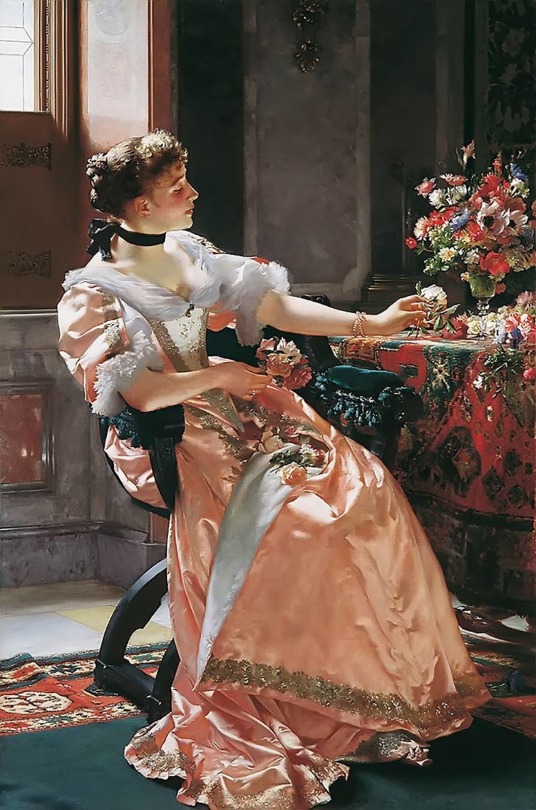


1890s dresses (from top to bottom) -
1890 Pretty in Pink by Paul de la Boulaye (private collection). From tumblr.com/blog/view/beautifulcentury 841X1307 @72 288kj.
1891 First Roses by Władysław Czachórski (location ?). From catherinelarosepoesiaearte.com/2020/05/wladyslaw-czachorski-1850-1911 1059X1600 @72 504kj.
ca. 1891 (artist's sale date) Femme au parasol by Alfred Stevens (Sotheby's - 27Jan22 auction Lot 209) 1524X1984 @300 968kj.
1895 Madame Édouard Zier by Edouard Zier (Musée Sainte-Croix - Poitiers, Vienne, Nouvelle-Aquitaine, France). From tumblr.com/blog/view/history-of-fashion/173993046239 570X1000 @72 106kj.
#late Victorian fashion#Belle Époque fashion#bustle era fashion#1890s fashion#straight hair#curled hair#wavy hair#quarter-length puffed sleeves#elbow-length full sleeves#cape#strap sleeves#waist band#natural waistline#V waistline#close skirt#train
17 notes
·
View notes
Photo

"You shall be with me always, my beloved." Over two millenia had passed when Apollon stood before the painting in the Salon de Paris. The two of them in the nude, the fatal discus on the ground. Silent tears wet his cheeks. Hyakinthos lived on in the art he inspired.
Microfic for the hashtag #LilLuvStory on Twitter.
La mort d'Hyacinthe (1801), by Jean Broc, Musée Sainte-Croix, Poitiers, France
25 notes
·
View notes
Photo

INSIDE LISETTE DU POITIERS MIND - task 40 psyche.
tw misscarrige, tw childhood trauma, tw child abuse.
Lisette, as much of a wanderer as she’s always been, as a few places in her mind she dares not cross. Closed gates with roseless thorns growing around them closing in, or perhaps keeping others out, all that she would rather forget. While she will over think minuscule moments of her life down to the smallest gesture she dares not recall her time at the hospital when she was 22 and no longer pregnant or her father's handprint on her face the one time she dared to talk back to him.
Lisette’s early life was made of rules and closed-off spaces. While most royal and noble children had paths laid out for them from an early age, Lis and her brother had little more than a room. There was no room for growth in the du Poitiers house - there was simply the right way to do things. And consequences for those that did them wrong. This lead to an unhealthy focus on appearances for the young girl, and a need to be perfect in every way.
As young children they were often left alone, the only other person in the house other than their parents (in the few instances they were there) was the cook, Mrs. Carmèle, who doubled as the nanny, for Saint Croix had long blown through the family money. Mrs. Carmèle was a smiling short figure, who had to be about 70 by the time they were born and could do little else around the house other than cook. But her family had lived on the farm surrounding Château de Gudanes for as long back as anyone cared to look, generations of fathers as steward and mothers as cooks, daughters as maids or nannies and sons as valets or horseman, along with dozens of other people serving her family.
But those times were long gone, even her father barely remembering them from his own childhood. Mr. Marien, Mrs Carmèle late husband, had died when Lisette and Alphonse had barely begun school and hadn’t worked in the house since the time they learned to crawl. And so only Mrs. Carmèle lasted, singing in the early morning as she baked bread, and telling stories in the afternoon as she knitted. The children weren't happy, but those short moments - of sitting at the old wooden kitchen eating warm bread with butter weren’t the only moments Lisette and Alphonse were ever truly children. She’s the reason Lisette ever learned kindness and empathy for others, even if these layers are often masked by more prominent family traits.
The only time they were ever all four in the same place was Sunday mass. The one time they were the perfect family. For all his peculiarities Saint Croix feared god more than most mortal men. And Florence had been brought up a devout catholic so she amused her husband in this one quirk. No matter what was happening in the house they were a family on Sunday morning. Her mother’s episodes lifted, her father’s anger subsided and her and Alphonse were expected to do just the same. You left problems at the door of the church. For God sees all and will punish you for any wrong thought.
The rest of the time was filled with tutors, for no matter how poor Saint Croix got he would rather die than send his children to school. Not only for the embracement of mingling with those so far beneath them but lest it put ideas in their minds. Once they were past the basics, reading and writing and math and music, the twins were separated. Different roles called for different classes. Alphonse learned history and politics and all he needed to one day become the head of a duchy. Lisette was trusted into etiquette and learned just enough of everything to make a pleasant conversation fit for a lady. This left them both lacking terribly well into their adult years and still affects Lis to this day. She has trouble looking at facts as part of a whole instead of simply different pieces of information. Can make a coercive long term plan. Lives life on a decision by decision basis. Alphonse had a horrible time in connecting to others on a personal level analyzing every situation, no matter how close to him, as if from a stranger's perspective. While charismatic in his own way he was an awful conversationalist in everyday matters and dealt horribly with plans being changed on him. This lead to a lot of their future misunderstandings.
Their childhood was also populated by a third force, their mother. Often lasting for days, Florence would get in depressive fits that would leave her locked in her room without eating or talking to anyone, followed by short highs where she would drink herself sick. The children were not only observers to this their whole life but often active participants. Either targets of their mother's rage or little nurses, taking her to bed when she passed out drunk in the stairway, or holding her hair back as she threw up in the tub. Lisette and Alphonse would often tag team staying awake during the worst nights to make sure she didn’t stop breathing or would have to force her medication on her when she refused.
Mrs. Carmèle lasted in the house until around their 11th birthday, by then to old to be of much help. The house was still cleaned, by the faceless maids who came and went in a van and treated them like they couldn’t be touched. Perfect porcelain children. By this age they had been almost fully shaped into the adults their parents wanted them to be - one at the image of their father and one of their mother.
Despite her father's best efforts thought - Lis learns patriotism and loyalty not from his forced lessons but from her cousins in Paris. Her and Alphonse are quite a bit younger than all of them - Giselle being the closest with a 6-year difference - making it easy to idolize them. Arnauld is charismatic and smart and a gentlemen or knight of the old stories in her eyes. Benoit kind and affectionate and as she grows older a close companion. Giselle fearless with a wit to her Lis dared not imitate at home. Her sense of loyalty is still forged to that childhood sense of wonder - she will find people who exhibit traits she’s been told are valuable and hang on to them. It’s very hard to come out of Lisette’s good graces once you entered it.
Her time in Hungary leads to two things - her general happy demeanor in life & the complicated relationship with her brother. Alphonse never quite forgave her for choosing to stay in Hungary almost full time past their 15th birthday. Yet Lisette there learned to be more relaxed and carefree. She was still the perfect lady when others were looking. But to have even the short-lived conversation with Levente where she could laugh out loud or be a somewhat normal teenage girl with Fanni were worth lifetimes to Lis. The closest thing she had ever had to it where the couple of times she had visited her cousins in Belgium, Louise a greatly welcomed friend in her youth.
The times she came home Alphonse was every time further and further from the boy she knew. At the time Lisette saw it has him becoming their father, cold and distance focused simply on himself and his ever so important work, the only difference was is distaste for women. Yet as Lisette grew older and further away from her house she understood that had simply been his way to escape their childhood. She had left. He had hidden in himself.
Her marriage at first feels like a small win. She had never tried to get closer to Akos, despite her time in Hungary being dependent on it, to focused on finally having the small freedoms she was allowed. Yet she created an image of him in her mind, the perfect husband from the few not conversations they had in their “courtship”. Married life, however, proved rough from the start. Ever great at holding her fantasies Lisette couldn’t help but be thrust into real-life at every point. He was no longer charming and mysterious - they simply knew nothing of each other, and her inability to voice her concerns or wishes lead her into the depressive states she had criticized her mother for her whole life.
Her mood only lifted when she feel pregnant. Lisette thrived in the idea of motherhood. To undo all her own childhood with a new life - in her young mind just another thing to get perfect. This just made her losing the baby a bigger blow. Still incredibly religious by this point in her life the loss of her baby felt like a curse, a punishment from god himself for her sins. That’s perhaps the biggest contributor to her running away. Not only is she unable to face others as a failure (for what’s a women's job at court but to give her husband’s family children) but for a genuine belief, she’s cursed. The news she’s later to find she’s infertile don’t help this vision of herself and to this day while she’s long past seeing it as her defining feature or a curse from God, she can’t help but feel less than other women for it.
Her time in Italy gives her a small taste of confidence and opens up old memories she never dared glace over before then. Mrs. Carmèle granddaughter Sophie who was just an year older than Lisette but laughed like the song of birds was in her throat, with long gold curls down her back. She used to fancy Alphonse but Lisette would blush every time she got close to whisper secrets at her ear in the afternoon sun. Or the pretty Hungarian she had pecked one during her first year there, a game late at night with giggling girls who had yet to find consequences. A child's kiss but one Lisette could feel in her lips for days after.
Gaia was her first love, perhaps the first person who truly saw her for all but her name. Her time with the Italian is short but marks her terribly. She’s unsure to this day if she would have survived that moment in her life without it and came out the other side not being just a broken shell, like her mother.
Her travels are where she learns who herself is, without the constraints of family or consequence. She’s now truly able to find her own way in life and explore the world to the fullest. She learns how to deal with emotions - instead of simply shutting them down and how to deal with conflict instead of simply running away or pretending it doesn’t affect her. It’s not instantaneous and there are setbacks. She’s not a perfect lover nor a perfect friend and she there’s a few relationships along the way that she could never fix - her brother being one of them. But during those years does one thing she was never allowed. She tries and fails and tries once more.
Meeting Stella, and the consequent relationship she gets out of it is a breath of fresh air simply because Lis gets to experiment with it. They don’t have anything concrete for a long time but there’s an air of eternal to their connection. Their encounters at first, the spontaneity of them, make it so they don’t squash Lisette’s slowly growing spirit. Anything to fast would have sent the girl she was running at the first sight of trouble. But, whether Stella realizes it or not, the year between their first meeting and their first official date make it not only founder in Lisette’s mind but make it so she’s actually ready for that type of commitment in her life. The reason she has trouble letting go of Stella now, is because Stella was never a constant before either. Lisette had to work on bettering herself to even have a chance at happiness with another person, and that didn’t come easy so she’s incredibly attached.
Alphonse’s death drops Lis off the edge she’d been climbing once more. She’s back at square one, and closing in on herself day by day. She’s more closed off once again, yet the free spirit hangs dormant beneath. She’s more willing to trust others than she would have been in her childhood but still has trouble creating deep connections with people outside the small circle of those she trusts.
#hshqtask039#//i didn't proof read this nor will i#if i look at it for longer it will never get posted#not tagged but if you're character is closed to lis they're probably mentioned
3 notes
·
View notes
Text
Vexilla regis prodeunt inferni.
« Voici que s’avancent les bannières du Roi des Enfers. » C’est ainsi que Virgile introduit Lucifer dans « la Divine Comédie » de Dante.
Variation sur le texte d’une hymne de Venance Fortunat à l’occasion du déplacement d’une relique de la Sainte-Croix vers Poitiers au VIème siècle.
2 notes
·
View notes
Photo
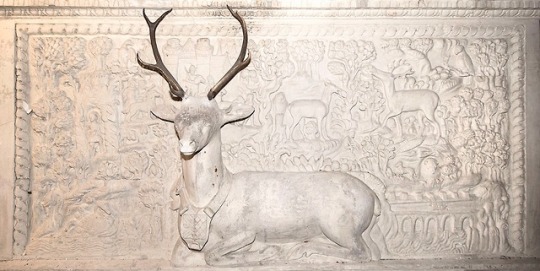
Fireplace With A Deer, from the Château de Chitré, Poitiers, Sainte-Croix museum, source
211 notes
·
View notes